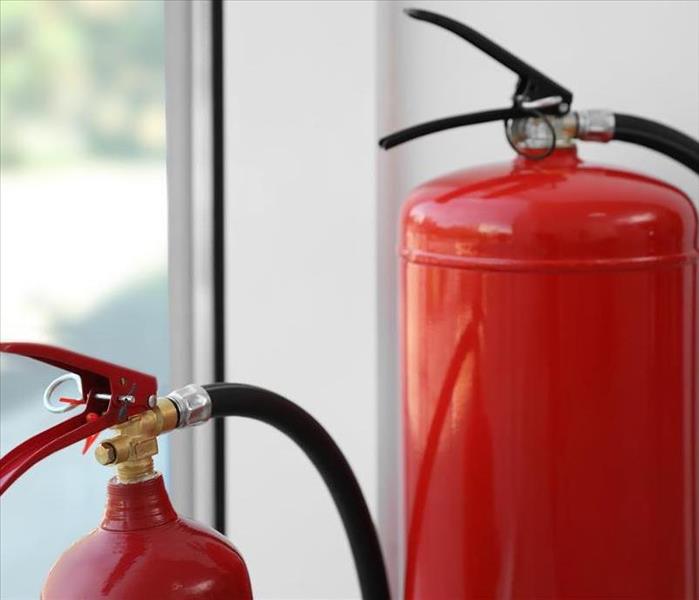Finding the Right Fire Extinguisher for Your Home
6/22/2022 (Permalink)
Responsible homeowners usually carry insurance to protect their homes and personal belongings from disasters such as theft and fire. While insurance can cover repairing and replacing losses, responsible homeowners also know that a plan for fire safety is also important.
A complete plan includes knowing how to evacuate the home and having smoke detectors and alarms to warn of a fire. Your fire safety plan is incomplete without a fire extinguisher on each floor. Here’s what you should know about buying extinguishers for your home in Bountiful, UT.
Choosing a Fire Extinguisher
While the National Fire Protection Association recommends an extinguisher for each floor, it’s important to understand the types of extinguishers that are out there first. Household extinguishers are categorized according to their rating, which indicates the types of fires they’re effective against:
- A - Effective on trash, wood, paper, and other normally combustible items
- B - Effective on grease and other flammable liquids
- C - Rated for electric fires
An extinguisher will indicate its rating. It will also include a number in front of the rating that indicates the degree of effectiveness. For example, a 4-A device will be more effective on combustible items than a 2-A device. Fire extinguishers that bear a C rating don’t include a number. This rating just indicates that the materials used to quench fires don’t conduct electricity.
When contemplating a home fire plan, consider the types of fires that are likely to occur in parts of your home. An extinguisher for use in a kitchen, for example, should include a B rating for grease fires.
Picking the Right Size
Fire extinguishers come in various sizes and weights. This should be another factor when choosing where to put them in your home. These are the standard sizes and recommended applications:
- 10-pound: Recommended for parts of the home where a fire can go unnoticed for a period of time, such as a garage or workshop
- 5-pound: Suggested for rooms like a kitchen where you need an extinguisher that’s easy to grab
- 2-pound: Recommended for cars
- Stovetop: Can be mounted on a range hood and is usually automatically triggered by flames
Recharging Your Extinguisher
When buying extinguishers, make note of whether it’s rechargeable or non-rechargeable. Non-rechargeable options can only be used once. This is why you can’t even test a non-rechargeable extinguisher, which gradually loses its charge once used. Rechargeable extinguishers can be serviced by an authorized fire equipment dealer. Even if you only used a small amount of the contents, your fire extinguisher will need to be serviced and refilled. Ideally, the extinguishers in your home should be rechargeable.
No fire preparedness plan is complete without a fire prevention system that includes fire extinguishers. While basic coverage involves at least one extinguisher per floor, you should consider the rating and the size of a fire based on its location in your home. Strategic placement of these fire prevention devices can reduce the damage you experience at your home in Bountiful, UT.
Less fire damage minimizes the time and cost required for a residential restoration services company to return your home to preloss conditions.






 24/7 Emergency Service
24/7 Emergency Service